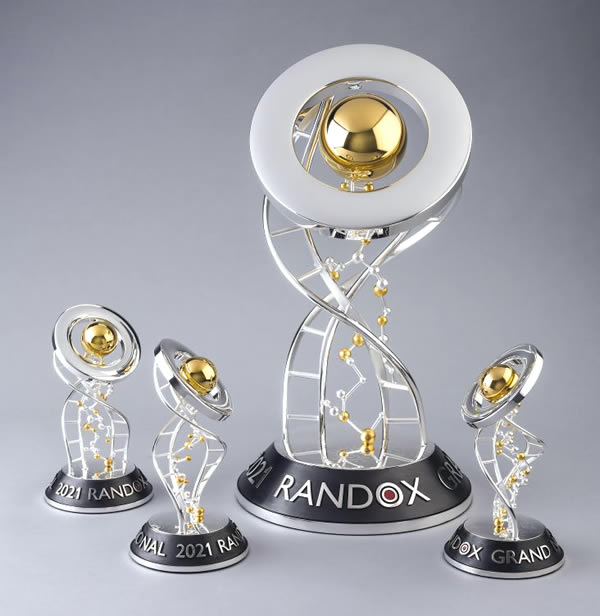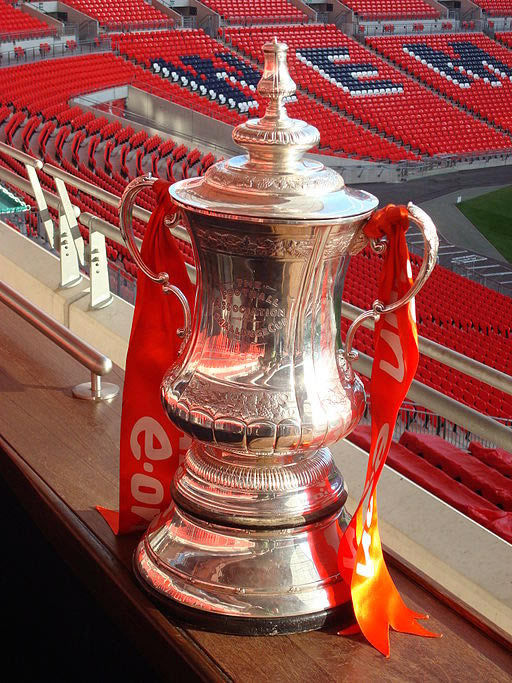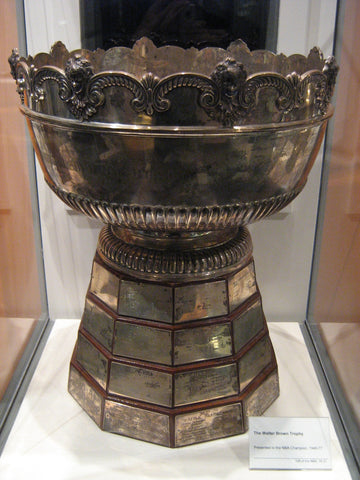The History of Trophies - A Glorious Past
Article Updated on 07/09/2023 by Andrew Wilson

Trophies date back thousands of years, although in the last century, awards have become more and more popular. This could be due to the material world we live in today because of the dazzling trophies and medals we enjoy receiving. It could also be because we as humans are fascinated by symbols of winning and desire to be recognised for achievements.
The word "trophy" has its origins in ancient Greece. It derives from the Greek word "tropaion", which referred to a monument erected at the site of a victory in battle. The word "tropaion" was associated with the verb "trepein," meaning "to turn," as these monuments often featured weapons or armor taken from defeated enemies and turned or hung on a post as a symbol of victory.
Over time, the term "tropaion" evolved into the Latin word "trophaeum," which had a similar meaning, denoting a monument or structure erected to commemorate a military victory. From Latin, it entered Old French as "trophée" and eventually made its way into the English language as "trophy," where it has come to represent any tangible object or prize awarded to commemorate a significant achievement, not limited to military victories but also extending to sports, competitions, and other accomplishments.
The tradition of presenting awards to victors dates back thousands of years to ancient civilizations, not just on the battlefield. The Greeks, for instance, presented amphorae filled with olive oil to the winners of the Olympic Games, a symbolic representation of the sacred significance of the event. These early trophies were less about extravagant design and more about the honor and prestige they bestowed upon the recipients.
In the Roman era, gladiatorial combat was a popular form of entertainment, and the victors were often rewarded with prized possessions and symbolic trinkets. This practice laid the foundation for the concept of rewarding excellence in sports.
Below is a timeline of some of the most well-known sports trophies including when and where they began.
Sports Trophy History
The Olive Wreath - Ancient Greece - 776BC

Image Credits: FocalPoint, CC BY-SA 4.0, via Wikimedia Commons
The use of olive and laurel wreaths in sports can be traced back to ancient Greece, where they were associated with athletic excellence and victory. In the early Olympic Games, which began around 776 BC, the victors were crowned with wreaths made from olive branches. The olive wreath, also known as kotinos, held great significance in Greek culture, symbolizing peace, prosperity, and the connection between the athletes and the gods.

Apollo Crowning Himself, 1781–1782, by Antonio Canova (Italian, 1757 - 1822) Image Courtesy of The J. Paul Getty Museum, Los Angeles, 95.SA.71
Panathenaic Amphorae - 5BC - 2nd Century

Image Credit: Metropolitan Museum of Art, CC0, via Wikimedia Commons
Carlisle Bells - 1599

Image Credit: BBC
The Carlisle Bells are a set of historic racing trophies with a rich and storied history in British horse racing. These bells, which are considered some of the oldest racing prizes in the world, were first awarded in the early 16th century. They are traditionally presented to the winners of Carlisle Bell Horse Race held at Carlisle Racecourse in Cumbria, England.
The bells are the only remaining part of what was a trophy and each are adorned with ornate engravings and inscriptions. They represent a unique blend of sportsmanship and craftsmanship, with a heritage that spans over five centuries. The Carlisle Bells remain a symbol of prestige and excellence in the world of horse racing, continuing to attract top jockeys and trainers to compete for these coveted prizes.
Kyp Cup - 1699
Little is known about what was awarded during the Middle Ages, but for sporting events in the late 1600s cups were awarded again. The Kyp Cup was a silver chalice with two handles and was presented to winners of horse racing events in New England. For a long time trophies were fashioned with handles and shape like a cup or jug. However the traditional shape evolved and other figures were introduced. Silver plates and bowls became recognised as trophies in other sporting events.
Scorton Silver Arrow - 1673
 Image Credit: scortonarrow.com
Image Credit: scortonarrow.com
The Scorton Silver Arrow traces its origins to 1673. Crafted with precision and elegance, this sterling silver arrow serves as a symbol of excellence in archery. It is renowned for its intricate design which reflects the craftsmanship of its time. The original silver arrow trophy was provided by Henry Calverley, who also won the first event.
Awarded as a prestigious prize in archery competitions held in Scorton, a village in North Yorkshire, England, this arrow has transcended centuries, embodying the enduring spirit of sporting achievement. The trophy can be won by being the first archer to hit the inner area of the target from 100 yards away. Today, a replica arrow is awarded in its place as the real Silver Arrow currently resides in The Royal Armories in Leeds.
Royal Musselburgh Golf Club Cup - 1774
 Image Credit: www.royalmusselburgh.co.uk
Image Credit: www.royalmusselburgh.co.uk
"A golf club was formed in 1760 and still continues to flourish, consisting of the principal gentlemen of the town and vicinity. A handsome silver cup is annually played for, the winner of which retains possession of it and is Captain of the Club for one year and attaches a gold or silver to it before the next competition." - Rev. Leslie Moodie, DD in the late 1700's
The Royal Musselburgh Golf Club is based in East Lothian, Scotland and first presented a cup to the winner of the golf tournament in 1774. The Cup dates back to 1774 which is known because of the engraved winner's name on the trophy. It was presented by Thomas McMillan who became Captain of the golf club by winning the trophy in 1774. The club was formed during a period when golfing was becoming more and more popular in Scotland with The Royall Musselburgh Trophy Cup is claimed to be the oldest competitive trophy that is still played for annually.
The Grand National - 1839

Image credit: Randox.com
The Grand National, once known as the Grand Liverpool Steeplechase, began in the early 1800's where the first race took place at a racecourse in Liverpool, England. The first winner was Lottery in 1839 and had to jump a wall, two hurdles and cross a stretch of land. Today, the grand national trophy changes every year and it is usually silver and gilded in gold with engravings on the base of the trophy. The 2021 Trophy by Randox was designed as a tribute to the key workers during Covid.
America’s Cup - 1851

Image Credit: Wikipedia, Public domain, via Wikimedia Commons
The America's cup is the oldest active trophy in sailing and was first presented in 1851. The cup is an ornate sterling silver bottomless ewer crafted in 1848. This trophy was given the name 'Auld Mug' in 1851 named after the winners of the first race who were a syndicate of businessmen who sailed the schooner America for the World's Fair in England. The cup was crafted in 1848 from high quality sterling silver.
The FA Cup - 1871

The FA Cup claims to be the world's oldest association football trophy and the first competition was in 1871. This competition is open to all professional and non-league English clubs and the current FA Cup trophy is the fifth trophy to be used and was crafted in 2014 by master trophy craftsmen and Royal warrant holders Thomas Lyte.
In all there have been 5 different FA Cup Trophies, and the trophy is only ever on loan so if you win it, you do have to hand it back to the FA by 1st of March the following year.
Each of the five trophies have interesting back stories. The first FA Trophy went missing after 23 years, under the stewardship of Aston Villa, winners in 1895. Then in the 1950s a career criminal supposedly confessed to stealing the trophy and melting it down into fake coins, but his story was never confirmed. Aston Villa were fined the princely sum of £25 to cover the cost of replacing the trophy.
The Claret Jug - 1872

Image Credit: By Dan Perry - CC BY 2.0, https://commons.wikimedia.org/w/index.php?curid=119888767
Formally known as the Golf Champion Trophy, the Claret Jug was first presented in 1872 at the Open Championship. However, it wasn't the first trophy to be presented at the Open as in 1860 the winner would be presented with the Challenge Belt, a leather belt adorned with a silver buckle. The winner of the first Claret Jug trophy was Tom Morris Junior in 1872.
Wimbledon Trophy - 1877

Wimbledon have presented many trophies throughout the years and today, there are still multiple trophies given to the Wimbledon Championship winners. The first Wimbledon trophy was the Field Cup which was used until 1883 and the Challenge Cup was used from 1884-1886.
Calcutta Cup - 1879

Image Credit: JaCastro7, CC BY-SA 4.0, via Wikimedia Commons
Crafted in India, the Calcutta Cup was owned by the Calcutta Football (Rugby) Club in 1873. The club closed in 1878 and in memory of the club, the members melted the 270 silver rupees in their bank and crafted it into a trophy. This was then presented to the Rugby Football Union. Today, the Calcutta Cup is presented to the winner of the Six Nations Championship.
Unusually the Calcutta Cup has three handles styled in the form of king cobras. The elephant on the lid of the trophy is a reference to the British Governor-General of India, who was often carried in procession on an elephant.
Fun Fact 1: The Calcutta Cup is the most valuable trophy in the Six Nations Championship, with an estimated value of £1 million.
Fun Fact 2: The Calcutta Cup has been stolen twice, in 1976 and 1984. Both times, the trophy was recovered.
Ashes Urn - 1882

Image Credit: danielgreef/Dan, CC BY 2.0, via Wikimedia Commons
The Ashes Urn is a small urn (10.5cm high) that is said to contain the ashes of a burnt cricket bail. The trophy was awarded as a personal gift to Ivo Bligh who was the captain of the England cricket team after a friendly match during the 1882-83 tour in Australia. The urn was then given to the Marylebone Cricket Club after Bligh's death who put it on display at the Lord's cricket ground in London.
An urn is a strange item to use as a trophy. However when given context, it seems appropriate. England lost to Australia in the first match of the 1882 series at The Oval, the defeat was so unexpected and humiliating for England that it was said that English cricket had "died".
A mock obituary was written in the Sporting Times:
"In Affectionate Remembrance of English Cricket which died at the Oval on 29th August, 1882, Deeply lamented by a large circle of sorrowing friends and acquaintances. R.I.P. N.B. —The body will be cremated and the ashes taken to Australia."
It is then said that after Bligh took a team to Australia and triumphed the following year, his wife burnt a bail, put it into a small wooden urn and gave it to her husband to bring back to England.
Stanley Cup - 1892

Image Credit: Alex Goykhman, CC BY-SA 4.0, via Wikimedia Commons
The Stanley Cup is North America's oldest professional sports trophy and was named after and donated by Sir Frederick Arthur Stanley. The Stanley Cup was presented to the winners of the challenge games in its early years and the National Hockey Association became the owners of the Stanley Cup when they formed in 1910.
Rugby League Challenge Cup - 1897

Image Credit: Rugby Football League, Copyrighted free use, via Wikimedia Commons Rugby League
The Cup was designed in 1897 by Fattorini & Sons, a silversmith in Bradford for a cost of just £60. It sits on a black base and the main part of the trophy is crafted from solid silver. The original trophy was last presented in 2001 to St Helens and was taken out of service due to its fragility; its handles had become damaged and the silver was wearing thin, the trophy too valuable to risk. The new trophy is considered just as precious.
Tony Collins, renowned sports historian and archivist, was quoted as saying about the trophy:
"When it went down to France for some Catalans publicity photos, it even had its own seat on the plane."
The winner's of the cup must follow a code of practice and when the cup is not in a secure cabinet, there must always be at least one person in attendance, protecting it.
24 Hours of Le Mans Trophy - 1923

Image Credit: 24h-lemans.com
The 24 hours of Le Mans competition is the oldest active sports car race in the world and has been held every year since 1923 in France. The first trophy was the Rudge-Whitworth triennial cup and was awarded to the winner of the car which could go the furthest distance over three gruelling 24-hour races.
The current trophy was first awarded in 1993 and created by Jean-Pierre Moreau, founder of the Drivers' Parade. It is one of the larger trophies in world sport and weighs almost 70kg. As you can see from the image above, it has a replica of the original Rudge-Whitworth trophy in the centre as a nod to its prestigious history.
The trophy must be handed back before the following years race, unless your team can win it for 3 races in succession. Then you are awarded the trophy permanently.
Jules Rimet - 1930

Image Source: nationalfootballmuseum.com
The Jules Rimet trophy was awarded to the winner of the FIFA World Cup from the first game in 1930 to 1970. It was originally named 'Victory', but was renamed in 1946 to honour Jules Rimet, the first FIFA President who passed a vote to initiate the World Cup. The Jules Rimet depicted the Nike, the Goddess of Victory from ancient Greek religion holding aloft a cup made from gold plated sterling silver.
Uruguay were the first winners of the cup. In 1974, the Jules Rimet trophy was replaced by the FIFA World Cup trophy which is still presented today and is made of 18 carat gold and was crafted in Italy.
Fun Fact: In early 1966, before England would eventually win the trophy, the Jules Rimet was stolen while on display in Westminster. It was eventually found by a dog named pickels who sniffed it out from its hiding place under a bush wrapped in newspaper.
In 1970 Brazil won the cup for the third time, meaning they were allowed to keep it permanently. In 1983, it was stolen from the Brazilian Football Confederation HQ and never seen again.
Walter A. Brown Trophy - 1949

Image Credit: Walter A Brown Trophy, CC BY 3.0, via Wikimedia Commons
The Walter A. Brown Trophy was awarded to the team who won the National Basketball Association (NBA) from 1949 to 1976. It was then replaced by a new trophy in 1977 and in 1984 it was renamed the Larry O'Brien Championship Trophy after the former NBA commissioner. Unlike the old trophy, the Larry O'Brien Trophy is given to the winning team for them to keep and a new one is made for each NBA final.
At North East trophies we understand the personal value of hard earned trophies by teams and individuals over past generations and we are proud to provide awards and trophies for a future generation of achievers. We work hard to bring our clients trophy dreams to life and we provide a personal engraving touch that showcases our reputation for outstanding customer service.
References:
https://www.bbc.co.uk/cumbria/content/articles/2007/06/27/carlisle_bell_feature.shtml
https://www.getty.edu/art/collection/object/103RTD
https://en.wikipedia.org/wiki/Olive_wreath
https://brewminate.com/the-ancient-origins-of-the-flower-crown-2/
https://www.scortonarrow.com/Trophies/Trophies.htm
https://www.nationalclubgolfer.com/travel/club-famous-old-trophy-royal-musselburgh/
https://www.bbc.co.uk/bitesize/articles/zkn247h
https://en.wikipedia.org/wiki/Calcutta_Cup
https://en.wikipedia.org/wiki/The_Ashes


Leave a comment